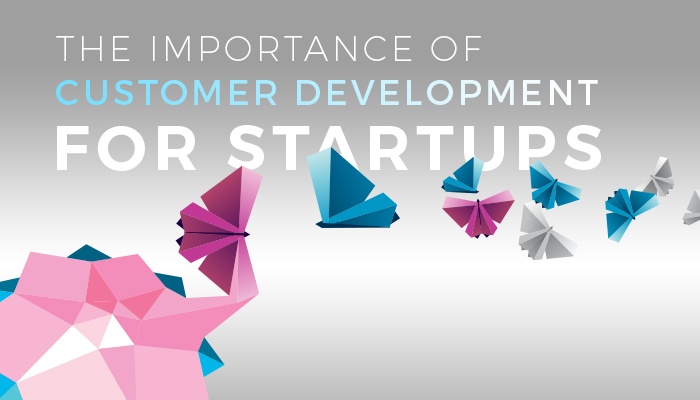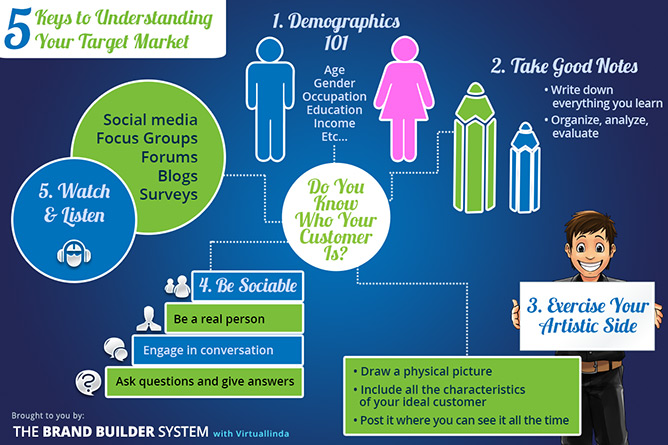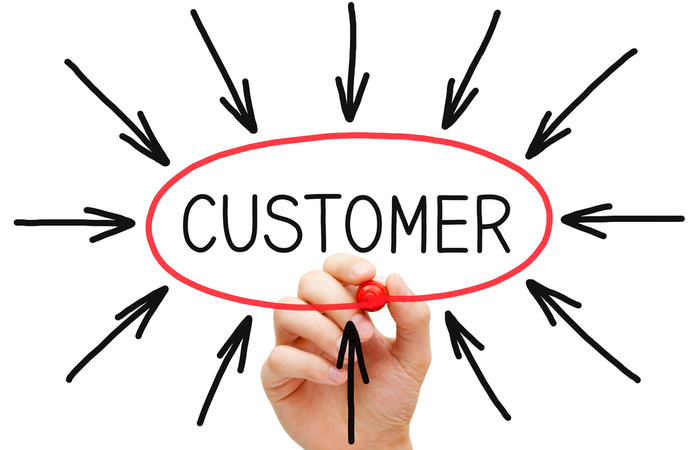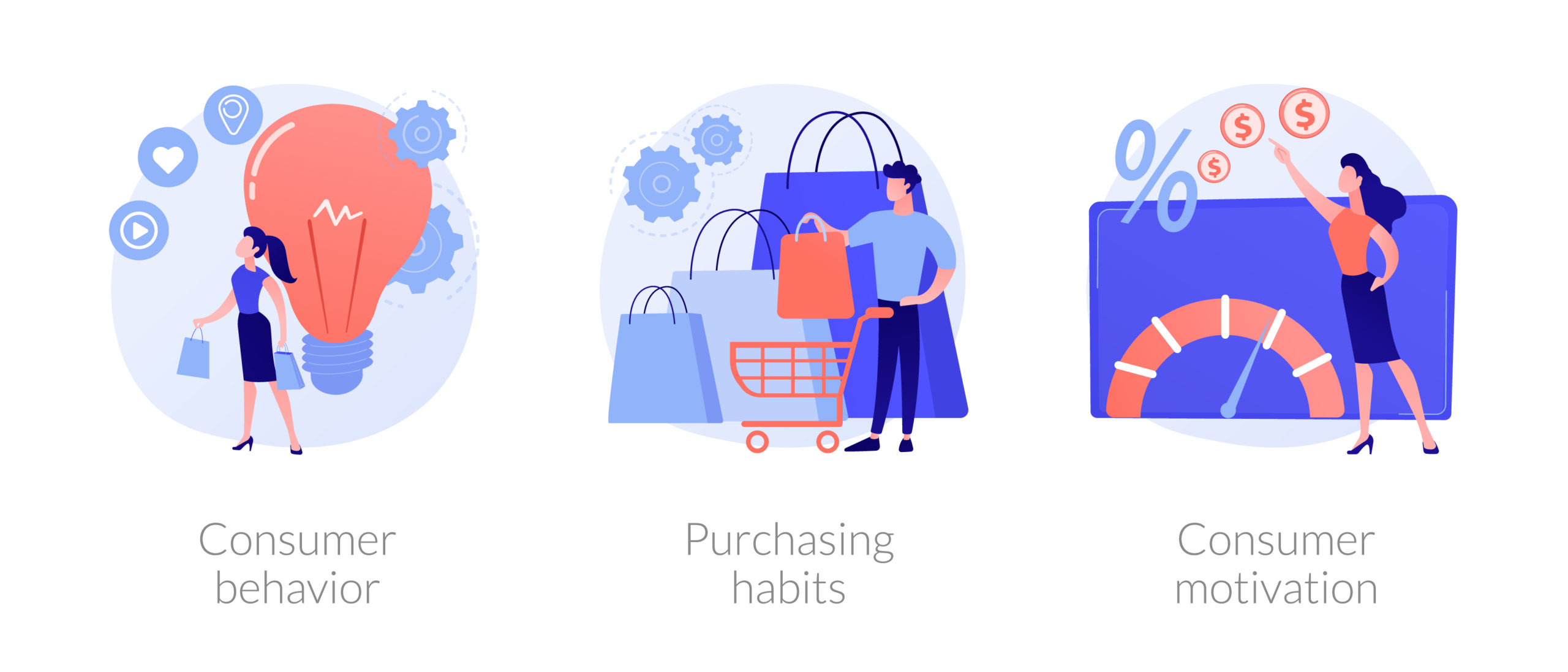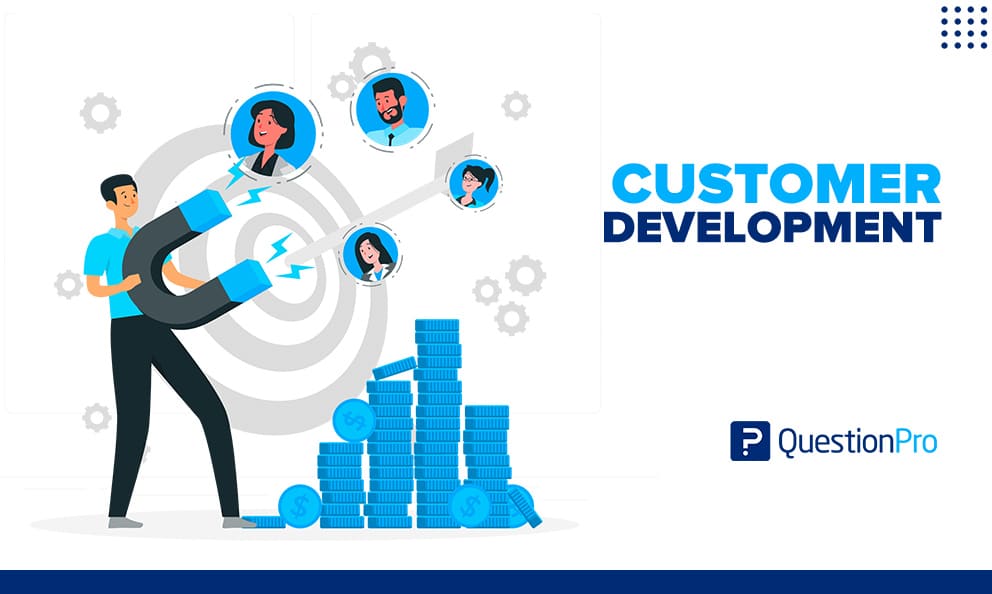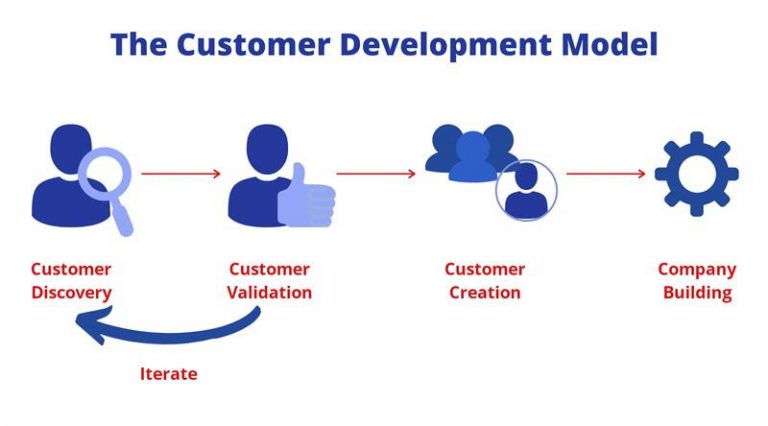The Foundational Role of Customer Development in Startup Success
Customer development is the backbone of any successful startup. It’s the process of understanding customer needs, pain points, and behaviors to create a product or service that meets their demands. By putting the customer at the forefront of product development, startups can increase their chances of success and drive growth. In fact, a study by CB Insights found that the top reason startups fail is due to a lack of market need, highlighting the importance of customer development in startup success.
Startup customer development involves gathering feedback from potential customers, iterating on product development, and continuously refining the product-market fit. This process helps startups to identify and validate their target market, reducing the risk of launching a product that nobody wants. By engaging with customers early and often, startups can also build a loyal customer base and create a competitive advantage in the market.
Moreover, customer development is not a one-time event, but rather an ongoing process that requires continuous iteration and improvement. Startups need to stay agile and adapt to changing customer needs and market conditions to remain competitive. By embracing a customer-centric mindset, startups can create a culture of innovation and experimentation, leading to sustained growth and success.
Some of the key benefits of customer development include increased customer satisfaction, improved product-market fit, and reduced risk of product failure. By prioritizing customer development, startups can also attract investors and talent, as a customer-centric approach is often seen as a key indicator of a startup’s potential for success.
In the next section, we’ll explore how to conduct effective customer interviews and gather valuable feedback to inform product development and drive growth.
How to Conduct Effective Customer Interviews and Gather Valuable Feedback
Conducting effective customer interviews is a crucial aspect of startup customer development. It allows startups to gather valuable feedback, understand customer needs and pain points, and inform product development. To conduct successful customer interviews, startups should prepare thoroughly, ask the right questions, and actively listen to customer feedback.
Preparation is key to conducting effective customer interviews. Startups should research their target market, identify potential customers, and develop a clear understanding of what they want to achieve from the interview. This includes defining the objectives of the interview, identifying the key questions to ask, and determining the best approach to gather feedback.
Asking the right questions is also critical to gathering valuable feedback. Startups should ask open-ended questions that encourage customers to share their thoughts, feelings, and experiences. This includes questions such as “What are your biggest pain points?”, “How do you currently solve this problem?”, and “What would you like to see in a solution?”. By asking these types of questions, startups can gain a deeper understanding of customer needs and preferences.
Actively listening to customer feedback is also essential to conducting effective customer interviews. Startups should pay attention to what customers are saying, both verbally and non-verbally, and take notes to reference later. This includes listening for key phrases, tone of voice, and body language, which can provide valuable insights into customer attitudes and behaviors.
Some best practices for conducting customer interviews include using a structured approach, taking detailed notes, and following up with customers after the interview. By following these best practices, startups can gather valuable feedback, build trust with customers, and inform product development.
For example, Airbnb, a successful startup, conducted extensive customer interviews to understand the needs and preferences of their target market. By gathering feedback from customers, Airbnb was able to develop a platform that met the needs of both hosts and guests, leading to rapid growth and success.
In the next section, we’ll discuss the importance of understanding your target market, including customer segments and personas, and how this knowledge can inform product development, marketing strategies, and sales outreach.
Understanding Your Target Market: Identifying Customer Segments and Personas
Identifying and understanding your target market is a critical aspect of startup customer development. By understanding your customer segments and personas, you can tailor your product, marketing, and sales efforts to meet their specific needs and preferences. This, in turn, can help you to differentiate your startup from competitors and establish a strong market presence.
Customer segments refer to the specific groups of customers that your startup is targeting. These segments can be defined based on demographics, behavior, preferences, or other characteristics. For example, a startup that offers a fitness app may target segments such as busy professionals, stay-at-home parents, or athletes.
Customer personas, on the other hand, are detailed profiles of your ideal customers. These personas should include information such as demographics, goals, challenges, behaviors, and preferences. By creating personas, you can gain a deeper understanding of your customers’ needs and develop targeted marketing and sales strategies.
For example, a startup that offers a meal kit delivery service may create personas such as “Busy Sarah” or “Health-Conscious Mark”. These personas would include information such as age, occupation, goals, challenges, and preferences, which would help the startup to develop targeted marketing and sales strategies.
Understanding your target market and creating customer personas can help your startup to develop a more effective marketing strategy. By tailoring your marketing efforts to specific customer segments and personas, you can increase the likelihood of resonating with your target audience and driving conversions.
In addition, understanding your target market can also help your startup to develop a more effective sales strategy. By understanding the needs and preferences of your target customers, you can develop targeted sales pitches and improve your chances of closing deals.
Some best practices for identifying customer segments and creating personas include conducting market research, gathering customer feedback, and using data analytics tools. By following these best practices, startups can gain a deeper understanding of their target market and develop targeted marketing and sales strategies.
In the next section, we’ll discuss the importance of developing a customer-centric mindset within a startup, highlighting the importance of embedding customer feedback into product development, marketing, and sales processes.
Developing a Customer-Centric Mindset: Embedding Customer Feedback into Your Startup’s DNA
Developing a customer-centric mindset is essential for startup success. By embedding customer feedback into product development, marketing, and sales processes, startups can create a culture of innovation and experimentation that drives growth and customer satisfaction. This approach requires a fundamental shift in mindset, from a product-centric to a customer-centric approach.
Startups that adopt a customer-centric mindset prioritize customer feedback and use it to inform product development, marketing strategies, and sales outreach. This approach helps startups to create products and services that meet the needs and preferences of their target market, reducing the risk of product failure and increasing customer satisfaction.
For example, Warby Parker, a successful eyewear startup, has adopted a customer-centric approach to product development. The company uses customer feedback to inform product design, and has created a try-before-you-buy model that allows customers to test glasses at home before making a purchase. This approach has helped Warby Parker to build a loyal customer base and drive growth.
Another example is Airbnb, a successful accommodation startup. Airbnb uses customer feedback to inform product development, and has created a platform that allows customers to rate and review their experiences. This approach has helped Airbnb to build trust with customers and drive growth.
Some best practices for developing a customer-centric mindset include creating a customer feedback loop, using customer feedback to inform product development, and empowering employees to make customer-centric decisions. By following these best practices, startups can create a culture of innovation and experimentation that drives growth and customer satisfaction.
In addition, startups can use various tools and techniques to embed customer feedback into their processes. For example, startups can use customer feedback software to collect and analyze customer feedback, and use data analytics tools to gain insights into customer behavior and preferences.
By developing a customer-centric mindset, startups can create a competitive advantage in the market and drive growth and customer satisfaction. In the next section, we’ll discuss the various tools and techniques that startups can use to gather customer feedback and insights.
Tools and Techniques for Customer Development: Leveraging Surveys, Analytics, and Social Media
There are various tools and techniques that startups can use to gather customer feedback and insights, including surveys, analytics, and social media listening. These tools can provide valuable insights into customer behavior and preferences, helping startups to inform product development, marketing strategies, and sales outreach.
Surveys are a popular tool for gathering customer feedback, allowing startups to ask specific questions and gather quantitative data. Online survey tools such as SurveyMonkey and Google Forms make it easy to create and distribute surveys, and can help startups to gather feedback from a large number of customers.
Analytics tools such as Google Analytics and Mixpanel can provide startups with valuable insights into customer behavior, including how customers interact with their website or app, and what features they use most. This data can be used to inform product development and marketing strategies, helping startups to create a more user-friendly and engaging experience for their customers.
Social media listening is another important tool for customer development, allowing startups to gather feedback and insights from social media conversations about their brand. Social media listening tools such as Hootsuite and Sprout Social can help startups to track mentions of their brand, and gather insights into customer sentiment and preferences.
Some best practices for using these tools include using surveys to gather specific feedback, using analytics to track customer behavior, and using social media listening to gather insights into customer sentiment. By following these best practices, startups can gather valuable insights into customer behavior and preferences, and use this information to inform product development, marketing strategies, and sales outreach.
For example, a startup that offers a mobile app can use analytics to track how customers interact with the app, and gather insights into what features they use most. This information can be used to inform product development, helping the startup to create a more user-friendly and engaging experience for their customers.
Another example is a startup that uses social media listening to gather insights into customer sentiment. By tracking mentions of their brand on social media, the startup can gather insights into what customers like and dislike about their product or service, and use this information to inform marketing strategies and product development.
In the next section, we’ll discuss common pitfalls to avoid in customer development, including the dangers of confirmation bias, neglecting customer feedback, and failing to iterate on product development.
Common Pitfalls to Avoid in Customer Development: Lessons from Failed Startups
While customer development is a crucial aspect of startup success, there are several common pitfalls that startups can fall into. These pitfalls can lead to failed startups, wasted resources, and missed opportunities. In this section, we’ll discuss some of the most common pitfalls to avoid in customer development, and provide examples of failed startups that illustrate these points.
One of the most common pitfalls in customer development is confirmation bias. This occurs when startups only seek out feedback that confirms their existing assumptions, rather than seeking out diverse perspectives and opinions. For example, a startup that only talks to customers who are already using their product may miss out on valuable feedback from customers who are not using their product.
Another common pitfall is neglecting customer feedback. This occurs when startups collect feedback from customers, but fail to act on it. For example, a startup that collects feedback from customers through surveys, but fails to make changes to their product or service based on that feedback, is neglecting customer feedback.
Failing to iterate on product development is another common pitfall. This occurs when startups fail to make changes to their product or service based on customer feedback. For example, a startup that launches a product and fails to make changes to it based on customer feedback may miss out on opportunities to improve the product and increase customer satisfaction.
For example, Quibi, a short-form video streaming service, failed to iterate on product development based on customer feedback. Despite receiving feedback from customers that the service was not meeting their needs, Quibi failed to make changes to the service, leading to its eventual shutdown.
Another example is Theranos, a healthcare technology company that failed to iterate on product development based on customer feedback. Despite receiving feedback from customers that the company’s blood testing technology was not accurate, Theranos failed to make changes to the technology, leading to a scandal and the company’s eventual shutdown.
By avoiding these common pitfalls, startups can ensure that they are gathering valuable insights from customers, and using that feedback to inform product development, marketing strategies, and sales outreach. In the next section, we’ll discuss the importance of measuring the success of customer development efforts, and highlight key metrics and KPIs that startups can use to track their progress.
Measuring the Success of Customer Development: Key Metrics and KPIs
Measuring the success of customer development efforts is crucial for startups to understand the effectiveness of their customer development strategies. By tracking key metrics and KPIs, startups can identify areas for improvement, optimize their customer development processes, and drive growth.
Some key metrics and KPIs that startups can use to measure the success of customer development include customer acquisition costs (CAC), retention rates, and net promoter scores (NPS). CAC measures the cost of acquiring a new customer, while retention rates measure the percentage of customers retained over a certain period. NPS measures customer satisfaction and loyalty by asking customers how likely they are to recommend the product or service to others.
For example, a startup that offers a subscription-based service may track CAC to understand the cost of acquiring new customers, and retention rates to understand the percentage of customers retained over a certain period. By tracking these metrics, the startup can identify areas for improvement, optimize their customer development processes, and drive growth.
Another example is a startup that offers a software product. The startup may track NPS to understand customer satisfaction and loyalty, and use this information to inform product development and customer support strategies. By tracking NPS, the startup can identify areas for improvement, optimize their customer development processes, and drive growth.
Some best practices for measuring the success of customer development include setting clear goals and objectives, tracking key metrics and KPIs, and using data to inform customer development strategies. By following these best practices, startups can ensure that they are measuring the success of their customer development efforts effectively, and using this information to drive growth.
In addition, startups can use various tools and techniques to measure the success of customer development, including customer feedback software, analytics tools, and survey tools. By using these tools, startups can gather valuable insights into customer behavior and preferences, and use this information to inform customer development strategies.
By measuring the success of customer development efforts, startups can ensure that they are on the right track to driving growth and success. In the next section, we’ll discuss the importance of continuously iterating and improving customer development processes, and provide tips for startups to stay agile and adapt to changing customer needs and market conditions.
Continuously Iterating and Improving: The Ongoing Process of Customer Development
Customer development is an ongoing process that requires continuous iteration and improvement. Startups must stay agile and adapt to changing customer needs and market conditions to remain competitive. This means that customer development is not a one-time event, but rather a continuous cycle of learning, iterating, and improving.
To continuously iterate and improve, startups must be willing to pivot and adjust their customer development strategies as needed. This may involve changing product features, adjusting marketing messaging, or modifying sales outreach strategies. By being open to change and willing to adapt, startups can ensure that they are always meeting the evolving needs of their customers.
Some best practices for continuously iterating and improving customer development include regularly gathering customer feedback, using data to inform decision-making, and being willing to pivot and adjust strategies as needed. By following these best practices, startups can ensure that they are always on the right track to driving growth and success.
For example, a startup that offers a software product may regularly gather customer feedback through surveys and user testing. Based on this feedback, the startup may make changes to the product features, user interface, and user experience to better meet the needs of their customers. By continuously iterating and improving, the startup can ensure that they are always delivering a high-quality product that meets the evolving needs of their customers.
Another example is a startup that offers a subscription-based service. The startup may use data to inform decision-making, such as analyzing customer retention rates and churn rates to identify areas for improvement. Based on this data, the startup may make changes to their marketing strategies, sales outreach strategies, and customer support processes to better meet the needs of their customers. By continuously iterating and improving, the startup can ensure that they are always delivering a high-quality service that meets the evolving needs of their customers.
By continuously iterating and improving, startups can ensure that they are always on the right track to driving growth and success. By staying agile and adapting to changing customer needs and market conditions, startups can deliver high-quality products and services that meet the evolving needs of their customers.

